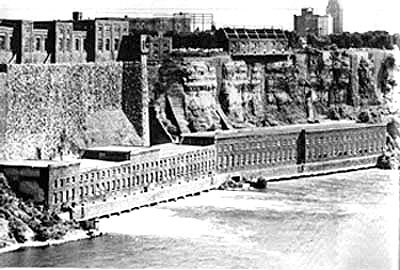Thomas Edison, George Westinghouse and Nikola Tesla, the main protagonists of the book, were enormously creative technologists. Edison improved the telegraph, invented the phonograph and incandescent light and the direct current electrical technology supporting the first electrical lighting system, and invented the technology that led to movies, holding more than 1100 patents. Westinghouse invented air brakes for trains, improved train signaling technology, led in the development of electrical technology, led in the development of alternating current electrical systems, and in the first electric locomotives holding more than 400 patents. Tesla invented alternating current motors and generators and held major patents for the development of radio, holding more than 100 patents and probably having failed to patent many inventions. Edison started the company that became General Electric and Westinghouse the eponymous corporations. Both died rich and respected. Tesla was a far less successful businessman, but died greatly respected for his contributions to the modern world. On the other hand, all three were ousted from their electric power companies by Wall Street bankers in the cut-throat business environment of the robber barons.
I did wonder why Charles Steinmetz, who played an important role in developing alternating current technology for General Electric, was not mentioned -- I suppose due to the requirements of the narrative style of the book. I understand that Steinmetz helped GE to join Westinghouse in the forefront of alternating current based companies.
One of the lessons of the book is that the last quarter of the 18th century was a time when lots of technologies were ripe for rapid development, corresponding to the Internet technologies in recent decades. I also note that while electrical technology was developing with astonishing rapidity in the late 19th century, its main impact in the growth of economies came in the early 20th century. It is impressive how important patents were in that development. The development of major corporations to commercialize the new inventions was also critical.
The business tactics that the author describes were brutal, including patent infringements, the use of political connections to grab key contracts, and even bribery. The public campaign built on the charge that AC systems were dangerous, including the development of AC electric chairs for executions, was especially nasty. Still, the fact that AC current could be transmitted more economically over long distances led eventually to its domination over DC in power systems, in spite of all the machinations of inventors and corporations.
I have been reading books dealing with political history and wars, but I wonder whether the development of electricity and of modern corporations in the 19th century didn't have more impact on our modern world that did the administrations Harrison, Cleveland, Garfield, McKinley, and Arthur.
The book gives an interesting view of the infighting among corporations and among their business and engineering leaders, as well as of the role of government in what one might otherwise see as corporate battles. Chicago's government was corrupt even then.
Jonnes is especially good at quickly conveying the nature of the society in which the technological and business developments were taking place. These included the economic crashes, especially that of the 1890s and the poverty of the people. New York faced tons of manure each night left by the herd of horses involved in transportation, as well as networks of wires in the skies threatening electrocution; Pittsburgh was dirty and smokey, threatening the health of those who stayed too long. Chicago was dominated by stock yards. Yet the rich lived in luxury -- mansions, private rail cars, fancy clothes. The world before electricity was very different than our own!
 |
| Niagara Power Plant |
The story of the diversion of the Niagara River to a massive power plant is especially interesting. The optimism of the investors who spent millions preparing the site before they had a technology that was assured to work impressed me, as did their willingness to divert water from one of the wonders of the world. Then Stanford White, perhaps the greatest and most controversial architect of his time, was hired to design the building hosting the power station. A group of millionaire investors came to visit the power plant as it went into operation, stunned by the difference between the first major hydroelectric plant and the standard coal fired steam engine plants of the day.
I don't think those who might be afraid of technology need be afraid of this book. There is one chapter on the history of the scientific exploration of electricity which will interest some (as it did me), but which can be skipped without damage to the rest of the chapters. Otherwise it is only necessary to remember that Edison was the champion of the supporters of direct current electrical systems (DC) that proved uneconomical because DC is too expensive to send over long distances. Westinghouse and Tesla were the champions of the supporters of alternating current electrical systems (AC) which came along a bit later and dominate the world today because of their lower cost for long distance transmission.
This book is a good read! If you are interested in the impact of technology on development, this book is full of insights!
No comments:
Post a Comment